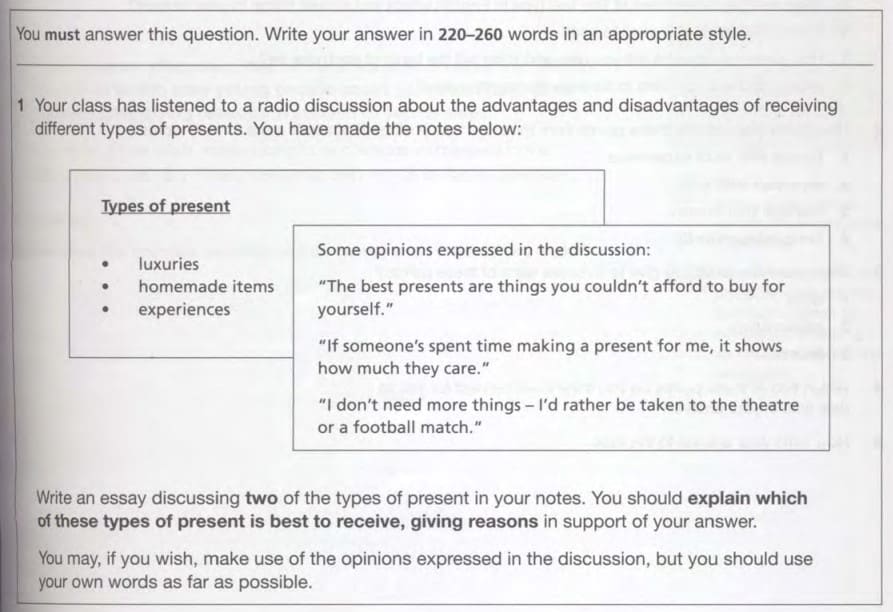Cambridge C1 (CAE) Writing Part 1: Guide to Writing the C1 Essay

Key Points
To successfully write a C1 level essay in the CAE exam, please do the following:
Step 1: Understand the Prompt
Step 2: Plan Your Essay
Step 3: Write the Introduction
Step 4: Write the Body Paragraphs
Step 5: Write the Conclusion
Step 6: Review and Edit Your Essay
What you will find in this guide:
C1 Essay for the Cambridge C1 Advanced CAE
Writing the C1 essay can be a difficult task, especially when it’s for an important exam like the Cambridge C1 Advanced (CAE). But don’t worry, with the right approach and preparation, you can master the art of essay writing. Here’s a step-by-step guide to help you navigate through the process.
Before we dive into the nitty-gritty, let’s understand why mastering essay writing matters:
Showcasing Your Language Proficiency: The essay is your chance to demonstrate your language skills. It’s not just about grammar and vocabulary; it’s about coherence, clarity, and effective communication.
Structured Thinking: Essays require organized thinking. You’ll learn to structure your ideas logically, making your arguments more compelling.
Impressing the Examiners: A well-crafted essay catches the examiner’s attention. It’s your opportunity to shine and leave a lasting impression.
The first part of the Cambridge C1 Advanced (CAE) Writing Paper is an essay. This is a compulsory task, meaning there is no choice of tasks in this part. The essay is your first opportunity to demonstrate your writing prowess and your ability to construct coherent arguments in English.
The essay should be structured with an introduction, supporting paragraphs, and a conclusion. The introduction sets the stage for your argument, the supporting paragraphs delve into the details, and the conclusion wraps up your thoughts. This structure is key to producing a well-organized and persuasive essay.
The word count for the essay is 220–260 words. It’s important to stay within this limit to demonstrate your ability to express your ideas concisely. Overwriting or underwriting can lead to penalties, so it’s crucial to practice writing within this word count.
Planning your response is a vital step in acing the essay. Before you start writing, take a few minutes to understand the prompt, brainstorm ideas, and outline your essay. This will help you write a focused and coherent essay.
The essay prompt will include two bullet points that you need to cover in your essay. Selecting and developing around these bullet points is a crucial part of the task. Make sure you address both points adequately in your essay.
Understanding the C1 Rubric
The Cambridge C1 Advanced Writing paper is scored based on four key criteria1:
- Content: This assesses how well you have fulfilled the task, if all the content is relevant to the task, and if the target reader is fully informed.
- Communicative Achievement: This checks if the writing is appropriate for the task, if it uses the right register and tone, and if all the points are communicated effectively.
- Organisation: This looks at the way the text is organised, if it uses the right conventions of the communicative task, and if the text is coherent and cohesive.
- Language: This assesses the range of vocabulary and grammatical structures, the level of accuracy in their use, and the appropriateness of the language to the task.
Challenging Areas in Writing the C1 Essay
Though you can prepare for the writing part through practice, there are some factors that some candidates deem challenging. Here’s a list of some of those difficulties.
Time Constraints:
The allocated time for essay writing is very good but some candidates find it a significant challenge. Crafting a well-structured and thoughtful essay within the given time frame requires efficient time management skills, and if you can’t do this during the exam time, you won’t get the score you deserve.
Lack of Ideas:
Some candidates find it challenging to generate ideas when confronted with unfamiliar essay topics. This may happen to everyone as you don’t know what the question will be about.
Lack of Clarity:
Many candidates are used to using unclear and generic ideas in their writing. This significantly hurts their score because an essay that is not elaborated with specific ideas often lacks clarity, and coherence does not get a C1 level score.
Grammatical Accuracy:
Maintaining grammatical precision is a common struggle. Candidates are often so focused on the content and the ideas they need to write about to the point where they forget about grammatical rules. This leads to errors that can impact the overall quality of the essay.
Use of Vocabulary and Grammar Forms:
A noteworthy challenge is the effective use of a diverse range of vocabulary and grammar forms, particularly for candidates operating both at and below the C1 level. Striking the right balance and demonstrating linguistic proficiency can be demanding.
Logical Progression of Writing Content:
Ensuring a logical flow in the progression of ideas within the essay is another hurdle. Crafting a well-organized and coherent narrative requires a strategic approach to presenting arguments and supporting details.
Spelling:
Spelling errors can detract from the overall impression of an essay. Achieving accuracy in spelling, especially under time pressure, poses a challenge for some candidates.
Sample Question

How to Overcome Challenges:
To Address the Lack of Ideas and Time Constraint Issues:
Create an Outline: Develop the habit of outlining your essay before writing to minimize thinking time during the exam.
Read More Essays: Read as many essays, on as many topics, as possible. By reading more essays you can familiarize yourself with different arguments and example ideas for various essay topics.
Regular Practice: Practice responding to diverse essay prompts regularly to enhance idea-generation skills.
To Address Grammatical Accuracy:
Practice with Feedback: Regularly practice essay writing with a teacher or language partner to receive corrective feedback on grammar and sentence structure.
Review and Edit: Allocate time at the end of the exam to review and edit your essay, focusing on correcting grammatical errors.
To Address the Vocabulary and Grammar Issues:
Diversify Vocabulary: Expand your vocabulary by reading a variety of materials to improve the effective use of diverse words.
Seek Expert Feedback: Seek feedback from teachers or language experts to refine the use of complex sentence structures and uncommon words in your essays.
Guide to Writing the Essay in Part 1
Step 1: Understand the Prompt
The first step in writing an essay is to understand the prompt. Read it carefully and make sure you know what is being asked of you. Identify the type of essay you need to write – it could be argumentative, descriptive, or another type. This will guide your approach to the essay.
Step 2: Plan Your Essay
Once you understand the prompt, start brainstorming ideas related to the topic. Don’t rush this process – take your time to come up with as many ideas as possible. Once you have a list of ideas, organize them into a clear, logical order. Make sure that you know how you are going to explain them (using very specific arguments and examples). Also, choose a few C1 Level words and grammar structures to use in your essay because you need to show that your writing is at C1 level. This will form the backbone of your essay and help you do a great job at writing your essay.
Step 3: Write the Introduction
The introduction is your chance to grab the reader’s attention. Start with a hook – a surprising fact, a quote, or a question. Provide some background information about the topic to give context to your essay. End the introduction with a clear thesis statement that outlines your main argument or focus.
Step 4: Write the Body Paragraphs
The body of your essay is where you make your arguments. Each paragraph should focus on one main idea that supports your thesis. Back up your points with very specific evidence and examples. Use transitional phrases to link your ideas and ensure your essay flows smoothly.
Step 5: Write the Conclusion
The conclusion is your final chance to leave an impression on the reader. Summarize your main points and restate your thesis in a new way. Provide a final thought or implication for the reader to consider. This should leave the reader with a sense of closure and completeness.
Step 6: Review and Edit Your Essay
Once you’ve finished writing, it’s time to review and edit your essay. Check for clarity, coherence, and cohesion. Correct any grammatical or spelling errors. Make sure you have fully answered the prompt and followed the essay structure.
Important Point
The key to mastering essay writing is practice. Write practice essays and get feedback. Learn from your mistakes and continuously improve your writing skills. Remember, the key to a good essay is a clear structure, strong arguments supported by evidence, and a thorough understanding of the topic. With these steps, you’ll be well on your way to acing your Cambridge C1 Advanced (CAE) exam.
Tips for Success
Understanding the rubric is the first step. Here are some tips to help you excel:
- Practice: Regular practice can help you get familiar with the format and expectations of the paper.
- Feedback: Seek feedback on your writing from a teacher or a knowledgeable friend. They can provide valuable insights on areas of improvement.
- Self-assessment: Try to assess your own work using the rubric. This can help you understand the criteria better and improve your writing skills.
Sample C1 Essay Question and Answer
Write an essay discussing two of the ways in your notes that adults can influence younger people’s behaviour. You should explain which way you think is more effective, giving reasons to support your opinion.
Ways adults can influence how younger people behave:
• giving rules
• setting an example
Sample Outline (Planning)
- Adults influence behavior
- Giving Rules = Clarity and consequences BUT Risk of superficial compliance
- Setting an Example = Emotional impact and role modeling LEADS TO Cultivating trust and responsibility
- Effectiveness A. Long-term impact B. Internalization of values C. Adaptability
- Summary
Sample Vocabulary to Use
- Clarity
- Compliance
- Cultivating trust
- Internalization of values
- Adaptability
Sample Answer
The influence of adults on the behavior of younger individuals is crucial for societal development as they play a significant role in shaping values, attitudes, and actions. Two prominent methods through which adults exert influence are by giving rules and setting an example. In this essay, I will explore these two approaches and discuss which one is more effective in molding the behavior of younger individuals.
One traditional method to influence the behavior of younger people is providing a set of rules and guidelines. Rules serve as a framework that defines acceptable and unacceptable behavior, helping establish boundaries and expectations. The rationale behind this method is that explicit guidelines leave little room for ambiguity, making it easier for younger individuals to understand the expectations placed upon them. While rules provide clear boundaries, they may be perceived as restrictive and authoritarian, potentially leading to rebellion or superficial compliance without true understanding or internalization of values.
On the other hand, setting an example is a more nuanced and subtle approach to influencing behavior as actions speak louder than words. The power of setting an example lies in its ability to evoke emotional responses and connect with individuals on a deeper level. Observing positive behavior in role models fosters a sense of trust, admiration, and inspiration, which can lead to the internalization of values. Setting an example taps into the emotional and psychological aspects of behavior formation, cultivating a genuine understanding of values and fostering a sense of personal responsibility.
In conclusion, both giving rules and setting an example are essential tools for adults seeking to influence the behavior of younger individuals. While rules provide structure and clarity, setting an example offers a more profound and lasting impact. The ability to inspire and motivate through personal conduct creates a foundation for genuine understanding and internalization of positive values. This approach is adaptable to different situations and contexts, promoting a more holistic and integrated understanding of ethical and responsible behavior.
References
CAE Writing Paper – Tips, Format & Tasks | C1 Advanced | engxam.com
How to write an essay? | C1 Advanced (CAE) | engxam.com
5 Common Mistakes to Avoid When Writing Essays | CollegeVine Blog
9 Essay Pitfalls and How to Avoid Them – Oxford Royale (oxford-royale.com)
Cambridge English Writing Assessment Scale
Your Experience
How was your experience preparing for Cambridge C1 Advanced CAE writing part 1? Did you find writing the essay easy or difficult? Share your experience in the comment section below.






